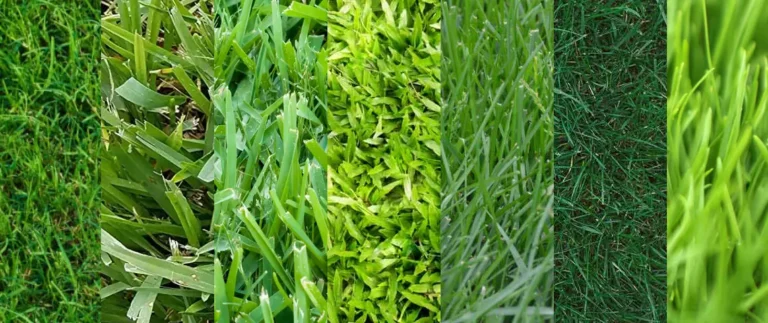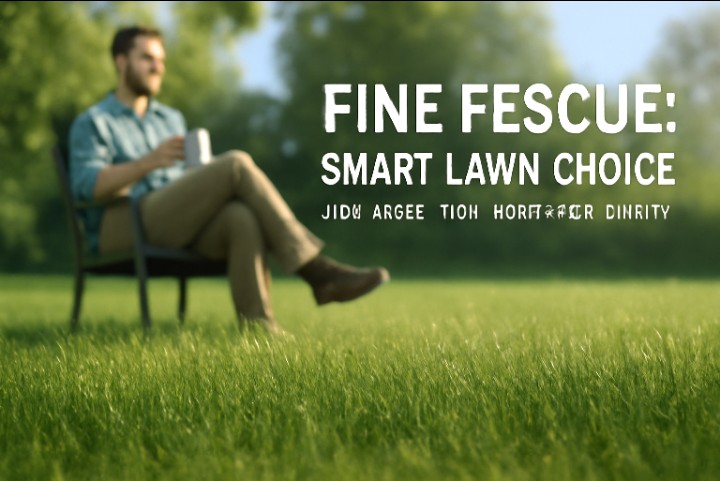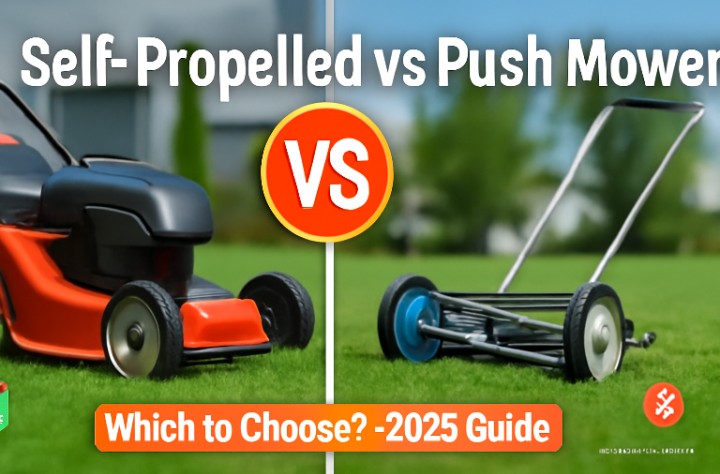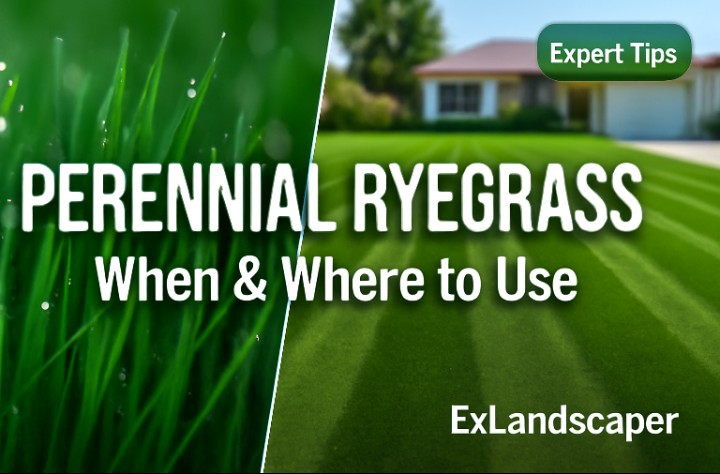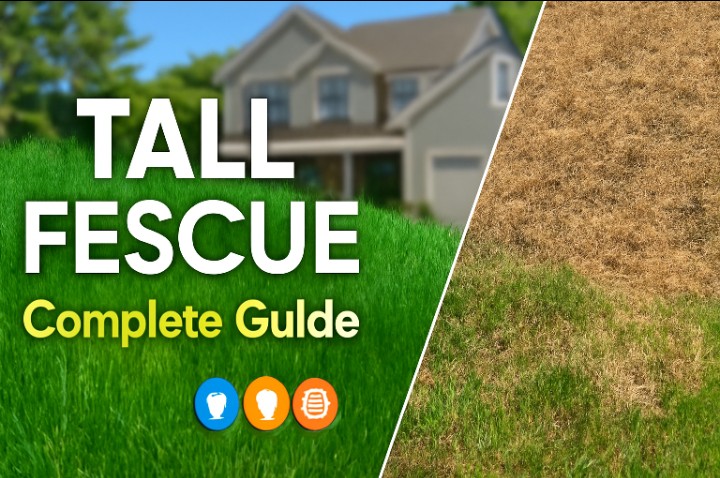Let me tell you about the day I almost got fired over grass. Yep, you read that right grass nearly ended my career.
It was a Tuesday morning in March. My boss Mr. Henderson called me into his office with that look. You know the one. Like he just found out his dog ate his homework. Our community center’s soccer fields looked like a crime scene. I’d been proudly managing them for eight months.
Parents were complaining. Kids were getting injured on the uneven surface. Worst of all? The local news had just run a story about “dangerous recreational facilities” with our field as exhibit A.
“Sarah” he saidaking his head. He stared out the window at what used to be our pride and joy. “What happened out there?”
I wish I could say I had some brilliant explanation. But honestly? I had no clue. I’d picked what looked like nice grass seed from the hardware store. Threw it down in spring, watered it religiously. Assumed everything would work out.
Spoiler alert: it did not.
That humbling conversation changed everything. It sent me on a journey that involved talking to every groundskeeper, turf specialist and grass nerd I could find within a 200-mile radius. What I discovered completely blew my mind. And probably saved my job.
The Wake-Up Call That Changed Everything
Here is what nobody tells you when you are standing in the grass seed aisle at Home Depot completely clueless. Not all grass is created equal. In fact most grass varieties will curl up and die faster than a vampire in sunlight when faced with real-world conditions. I learned this the hard way. Our “premium grass seed blend” turned into a patchy, muddy nightmare after just one season of youth soccer. The kids were coming home looking like they had been mud wrestling instead of playing sports. I was getting dirty looks from every parent in town.
But here is the plot twist that really got me. After months of research and countless conversations with professionals, I discovered something amazing. Natural grass is actually safer than those fancy artificial turf fields that cost six figures to install.
The studies are pretty clear. Real grass provides better shock absorption. Reduces injury rates. Gives players a more predictable surface to work with.
The problem was not grass itself – it was choosing the wrong type for our situation. It’s like trying to use a sedan for rock climbing. The concept is sound, but you need the right equipment for the job.
My Hard-Earned List of Grass Champions
Bermudagrass – The Comeback Kid That Stole My Heart
I’m gonna be completely honest here. My first impression of Bermudagrass was terrible. When old Jimmy from the hardware store suggested it, I looked at him like he had just recommended planting weeds. “That aggressive stuff?” I asked. “Won’t it take over everything?” Jimmy just chuckled. “Honey, sometimes aggressive is exactly what you need.”
Man, was he right. Watching Bermudagrass in action is like witnessing a superhero movie. I have seen areas that looked absolutely hopeless brown, patchy, trampled to death, completely green and lush again within two weeks. No joke.
What made me a true believer:
- Those roots go down deep. I’m talking 6+ feet when fully established.
- Last July, we had kids’ camps running on the field every single day for three weeks straight. Plus evening soccer practice. Any normal grass would have waved the white flag. Our Bermuda just kept getting thicker.
- During that brutal heat wave last summer it hit 109°F for two solid weeks. While everyone else’s lawns turned into hay, ours stayed so green people thought we had some secret watering system
The real deal:
- Perfect for hot, sunny climates (zones 7-10). It’s basically solar-powered
- Shade situation: needs full sun like a sunflower. Anything less and it gets moody
- Water needs: once those roots get established, it laughs at drought conditions
- Traffic handling: bring on the chaos. This grass feeds on abuse
- Mowing: keep it trim at 1-2 inches. It actually prefers being short
My rookie mistake: I tried to baby it at first. Watered it every day like it was a delicate flower.
Big mistake. This grass wants to be tough, so let it be tough.
Kentucky Bluegrass – The Neighborhood Favorite
Okay confession time. I have a serious crush on Kentucky Bluegrass. It is like the golden retriever of the grass world: beautiful, friendly and makes everyone happy just by existing. The first time I saw a perfectly maintained Kentucky Blue field was at my cousin’s golf course in Ohio. I literally stopped mid-conversation and just stared. It looked like someone had laid down the most expensive carpet money could buy. Then somehow made it alive and green.
Why it captured my heart:
- The density is absolutely ridiculous. It’s so thick you could probably bounce a quarter off it.
- My neighbor’s kids spend hours playing barefoot on their Kentucky Blue lawn. Why? Because it is so soft and comfortable.
- Even though it does not have the deep roots of tall fescue, it forms this incredible protective mat.
The honest truth about this beauty:
- Best for northern states and cooler areas. It’s basically the opposite of Bermuda
- Shade game: can handle morning shade but really wants that afternoon sun
- Thirst level: definitely drinks more water than the tough-guy grasses
- Durability: don’t let the pretty face fool you. It’s tougher than it looks
- Mowing height: 2-3 inches. Please don’t scalp it – learned that one the hard way too
Pro tip I learned from a golf course superintendent: If you are going to invest in Kentucky Bluegrass, don’t cheap out on the seed quality. The difference between good and great seed is night and day.
Perennial Ryegrass – My Emergency Hero
Think this, It is April 15th. We have our first big tournament in three weeks. Half our field looks like the surface of Mars.
Panic mode: activated.
That’s when my new best friend at the county extension office introduced me to perennial ryegrass. “Trust me” she said. “This stuff germinates faster than gossip in a small town.” She wasn’t kidding. I planted on a Wednesday. By the following Monday I could literally see green fuzz covering the bare spots. By tournament day, those areas were ready for action.
What makes this grass special:
- Goes from seed to playable surface faster than anything else I have worked with. We are talking 7-10 days for germination
- The individual blades are surprisingly tough. They handle cleats better than grass that’s been growing for years
- Every groundskeeper I know in the northern states swears by this stuff for quick repairs
The reality check:
- Climate love: cool-season all-star performer
- Sun requirements: needs decent light to do its magic
- Water dependency: more thirsty than I’d prefer but worth it for the speed
- Toughness: takes punishment like a champ but does not bounce back super quickly
- Cutting height: 2-3 inches works perfectly
Fair warning: This grass is like that friend who is amazing in a crisis but needs constant attention afterward. Great for quick fixes. But you will need to baby it a bit.
Tall Fescue – The Unbreakable Friend
If grass varieties had personalities, tall fescue would be that friend who never complains. Always shows up when you need them. Somehow thrives in situations that would break most people. I first fell in love with tall fescue during the Great Drought of 2019. That’s what I call it, anyway. While every other lawn in the neighborhood turned brown and crispy, the tall fescue sections of our field stayed green and kept growing.
It was like having a reliable pickup truck in a world of fancy sports cars.
What completely impressed me:
- The individual grass blades are thick and sturdy. Almost like green plastic drinking straws
- Works in pretty much any climate that is not tropical or arctic
- I once watched a tall fescue section survive six weeks without water during a heat wave. That heat wave killed literally everything else in sight
Everything you need to know:
- Climate flexibility: adapts to almost anywhere (zones 2-7). It is the Switzerland of grasses
- Shade tolerance: way better than most. Can handle tree coverage pretty well
- Drought toughness: once those deep roots get going, it is practically indestructible
- Traffic resistance: built like a Sherman tank and just as reliable
- Mowing sweet spot: 2-4 inches. Higher is actually better for stress tolerance
Something cool I learned: The deeper you let those roots grow, the more drought-tolerant it becomes. One turf expert told me he has seen tall fescue roots go down 8+ feet in ideal conditions.
Zoysiagrass – The Living Carpet Experience
Walking on mature Zoysiagrass is like stepping onto a luxury hotel carpet. Except it’s alive and green. The first time I experienced it was at a fancy country club where my aunt worked. I literally asked if it was real grass. The density is almost supernatural.
I watched a group of kids try to play hide-and-seek in it. They could not even make proper hiding spots because the grass was so thick they could not compress it down.
The incredible experience:
- Creates a playing surface so dense it almost feels artificial under your feet.
- Handles southern heat and humidity like it was designed for it. Which, technically, it was.
- Forms such a tight living mat that weeds basically can not find a way to establish themselves.
What you should definitely know:
- Climate needs: warm-season grass that loves the South
- Shade handling: actually not terrible for a sun-loving variety
- Water requirements: pretty drought-tolerant once it gets established
- Abuse tolerance: takes serious punishment and somehow gets stronger
- Maintenance height: 1-2.5 inches keeps it looking perfect
Patience required: This grass establishes slowly. But once it’s happy, it’s practically bulletproof. Think of it as a long-term investment.
Seashore Paspalum – The Salt Water Survivor
I discovered this grass during a family vacation. We were at a coastal golf course in South Carolina. The greenskeeper was complaining about salt spray from the ocean killing every other type of grass he had tried. But this stuff was absolutely thriving just 100 yards from the beach.
“Most grasses hate salt” he explained. “But this variety actually seems to enjoy it. It’s like having a fish that prefers salt water.”
Its amazing superpower:
- Not only tolerates salty conditions but actually seems to prefer them
- Perfect for coastal properties where normal grass goes to die
The straight facts:
- Climate zone: warm coastal areas only. Very specific needs
- Sun needs: full sun or it gets cranky
- Water situation: needs regular irrigation despite being incredibly tough
- Durability: surprisingly excellent at handling heavy foot traffic
- Cutting height: 1-2 inches works best
Reality check: This is a specialty grass for specific situations. But when those conditions match, it’s absolutely incredible.
The Professional League Players
Celebration Bermuda – My Professional Crush
After working with dozens of different grass varieties over the years, meeting Celebration Bermuda was like meeting a celebrity. The first installation I saw was at a college training facility. I literally spent my lunch break just walking around staring at it.
The athletic director noticed me gawking and laughed. “First time seeing Celebration?” When I nodded, he said, “Yeah, everyone has that reaction. It’s like the difference between a Honda and a Ferrari both will get you where you are going but one does it with style.”
What makes it absolutely special:
- That distinctive blue-green color is unmistakable. It looks healthy even when it is stressed out.
- Unlike most Bermuda varieties, this one actually tolerates some shade. Which completely blew my mind
- Survives cold snaps that would send other warm-season grasses into full panic mode
- Disease resistance is off the charts. I rarely see the brown patch or leaf spot issues that plague other varieties
The maintenance bonuses that save money:
- Requires less fertilizer than other Bermudas. My budget definitely appreciated this
- Grows low and dense naturally, so you are not mowing every other day
- Goes dormant when soil temperatures hit about 55°F but comes back stronger than ever in spring
Tifway 419 Bermuda – The Gold Standard Legend
There is a reason professional stadiums pay premium prices for Tifway 419.
I have been lucky enough to walk on several NFL fields. The consistency of this grass is absolutely mind-blowing. It’s like walking on a perfectly maintained carpet that somehow stays exactly the same height and density everywhere.
Championship-level performance:
- Creates the most uniform playing surface I have ever experienced
- Recovers from damage so fast it almost seems magical
- Naturally crowds out weeds better than most varieties I have worked with
- The fine texture creates a smooth, predictable surface that athletes absolutely love
What it demands in return:
- Must have full sun. Even partial shade makes it unhappy
- Needs more fertilization and attention than Celebration
- Professional cutting height: 0.5-1 inch. You will need a reel mower for proper results
Something a professional groundskeeper taught me: Tifway 419 is like a high-performance race car. Incredible results but you need to know what you are doing and be committed to maintenance.
The Revolutionary Game Changer: Coachella™ Bermuda
The entire turfgrass industry is talking about this breakthrough from UC Riverside. After learning about it, I’m genuinely excited about the future. Imagine getting all the toughness of traditional Bermuda with dramatically reduced water requirements. It’s like having your cake and eating it too.
What’s creating all the buzz:
- Specifically engineered for drought-prone areas. Hello, climate change solutions!
- Stays green longer during water restrictions
- Initially being released to golf courses and major stadiums
- Should be available to regular homeowners by early 2026 through West Coast Turf
This could completely revolutionize how we think about sustainable landscaping. While still maintaining professional-quality results.
The Ultimate Professional Showdown: Celebration vs Tifway 419
Having worked extensively with both varieties, people constantly ask me which one I’d choose for my own facility.
Here is my completely honest, no-BS comparison:
Speed of Recovery: Tifway 419 wins this round. After a particularly brutal weekend tournament that left sections of our field looking like a construction zone, the Tifway areas were game-ready a full week before the Celebration sections bounced back.
Shade Tolerance: Celebration takes the trophy here. No contest. If your facility has buildings, bleachers or even large trees casting any shadows during the day. Celebration is your only realistic choice between these two champions.
Maintenance Reality: Celebration is the clear winner for most situations. It simply requires less babying, fewer inputs and less specialized knowledge to maintain professional-quality results.
When Your Grass Waves the White Flag
Becoming a Grass Detective (Skills I Never Knew I Needed)
Learning to diagnose grass problems correctly was like developing a superpower I never knew I wanted.
When brown spots started appearing on our main field, I initially went into full panic mode. Assumed we had some terrible disease that would require expensive treatments. But traffic damage has its own distinctive signature. It is completely different from other problems once you know what to look for.
My hard-earned diagnostic cheat sheet:
- Irregular, patchy brown areas in high-traffic zones – traffic damage
- Perfect circular dead spots with defined edges – probably fungal disease
- Thin, struggling grass throughout the entire area – likely soil compaction issues
- Grass that won’t regrow in specific spots no matter what you do = serious compaction problems
The Science Behind the Destruction (The Depressing Truth)
Soil Compaction: Every single footstep compresses soil particles. Gradually squeezes out the tiny air spaces that grass roots desperately need to breathe. I have tested soil that was so compacted that water would literally run off the surface instead of soaking in. Like trying to water concrete.
Physical Plant Trauma: Cleats and constant pressure do not just bend grass. They literally tear and bruise the individual blades and crown areas. Think of it like getting a severe rug burn that takes weeks to heal properly.
Weakened Plant Immune System: Just like people, stressed grass becomes vulnerable to everything. Invasive weeds. Opportunistic diseases. It is a downward spiral that can be incredibly difficult to break without intervention.
My Battle-Tested Recovery Playbook
Hard-Won Lessons (Mistakes That Taught Me Everything)
Document Everything Like a Crime Scene: I started keeping a detailed photo journal of problem areas. Tracking which sections get hit hardest each season. This data became absolutely invaluable for planning renovations and making strategic decisions.
Strategic Traffic Management: We began rotating practice locations on a weekly basis. Giving worn areas legitimate recovery time.
It sounds ridiculously simple but the results were dramatic and immediate.
Temperature-Based Timing: I completely stopped following calendar dates for overseeding. Now I base everything on actual soil temperatures between 60-80°F. Which usually means late spring or early fall in our specific area.
Patience with New Grass (The Hardest Lesson): I learned this one after allowing play too early on newly seeded areas. Watched weeks of work get destroyed in a single practice session. Give new grass a full month minimum to establish or prepare to start completely over.
Prevention Strategies That Actually Work (No BS Edition)
Community Aeration Events: I turned core aeration into an annual community event with free pizza for volunteers. Not only does it save serious money on labor costs. People really appreciate being involved in maintaining their local facilities.
Evidence-Based Nutrition Programs: Well-fed grass recovers faster and resists stress significantly better. I follow soil test recommendations religiously rather than guessing what nutrients might be needed.
Strategic Mowing Heights: I set all our mowers to the maximum recommended height for each specific grass variety. That extra blade length dramatically improves stress tolerance and recovery speed.
Weather-Based Field Closures: Never, ever, EVER allow play on wet grass.
I learned this lesson after one muddy practice session created damage that took literally four months and significant money to repair properly.
My Final Thoughts (What I Wish Someone Had Told Me)
After years of spectacular failures, small victories and everything in between I have learned something important. Choosing grass for heavy traffic situations is not just about finding something tough. It’s about creating a perfect match between variety, specific site conditions, realistic use patterns and honest maintenance capabilities. The premium Bermuda varieties like Celebration and Tifway 419 have absolutely earned their reputations. They are the gold standard for professional applications. But for homeowners, schools and community facilities with limited budgets, varieties like tall fescue or Kentucky bluegrass can provide excellent results. Without requiring a dedicated groundskeeping staff.
The innovations coming down the pipeline give me genuine hope. Especially breakthrough varieties like Coachella™ Bermuda. We are finally seeing real breakthroughs that address both high performance and environmental responsibility. But here is the most important thing I have learned. Even the most expensive, cutting-edge grass variety will fail spectacularly without proper installation. Without realistic establishment periods. Without consistent maintenance practices. I have watched too many projects fail not because they chose the wrong grass. But because they did not commit to doing the fundamentals correctly from day one.
Whether you’re managing a major league stadium or just trying to keep your backyard looking decent, the core principles remain exactly the same. Understand your specific conditions. Choose truly appropriate varieties. Install them correctly the first time. Commit to giving them what they need to succeed long-term. The grass varieties that thrive under pressure are not just genetically tough. They are perfectly matched to their specific situations and properly supported throughout their establishment and growth.
That is the secret I desperately wish someone had shared with me three years ago. When I was standing in that muddy, embarrassing field, wondering how everything had gone so wrong so quickly.
Trust me, your future self will thank you for getting it right the first time.

